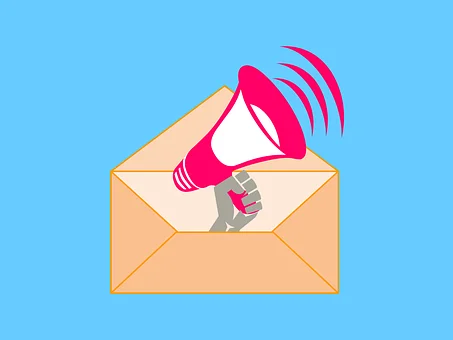Meta: With worldwide email open rates standing at 18 percent, how do you ensure your emails are seen, opened, and acted on? Check out these tips.
Doesn’t it feel great curating emails and sending them out to people who willingly want to hear from you?
The ROI is impressive too. You can rake in $36-$45 for every dollar you invest in an effective email marketing campaign.
Now, back to the feel-good part—just because people willingly signed up to hear from you, doesn’t mean they will open your email.
Recent statistics reveal that only 18 percent of marketing emails are opened. In other words, most marketing emails fall into the treacherous valleys of spam folders.
So, how do you bump up open rates? We explore that, plus other digital marketing strategies that contribute to higher sales numbers.
- Top Email Marketing Tips

Consider the following:
- Use real people’s names as the sender. Studies found that using specific people’s names over company names or general email addresses can boost open rates by 15-35%. It improves credibility and gives them a person they can write back to for further engagement.
- Be careful with your words. Adding words like, “secrets’ ‘ and “awesome” to your subject line may attract subscribers to click on your emails. “Upgrade”, “free”, “features”, and “congratulations” appear spammy and may be reported.
- Segment your subscribers. Segmented emails result in 23 percent more opens than unsegmented ones. Subscribers fall into different categories, have different interests, and experience differing challenges. By placing them in groups that suit their situation, you improve the relevance of your messages.
- Test your subject lines. 64 percent of email recipients base their decision to open emails on the subject lines. If they find it appealing, they open it. If they don’t… you guessed it. Try out different headlines (about 6-10 words) and check if your tone sits well with your subscribers.
- Embed interactive content in your email. Quizzes, assessments, interactive content, and interactive calculators are fun but useful tools you can embed to boost open rates examples of content that you can embed to increase
Bonus tip. Professional SDR agencies can help you maximize your strategy by leveraging their knowledge of triggers that boost open rates, click-throughs, and conversions. You can choose the bouquet that best suits your needs and budget.
- Develop Your Competitive Edge

In today’s highly competitive world, B2B consumers are constantly checking out and comparing vendors before making purchases.
If you want to retain customers and acquire new ones, you’ll need a special angle to help you stand out. A compelling reason which convinces buyers that yours are the right solutions for their needs aka your competitive edge.
By competitive edge, we’re talking about hard to duplicate attributes that allow you to outperform the competition. There are several sources of competitive edge including offering social prestige, highly skilled labor and using the latest or proprietary tech.
Think about the following
- Product/service attributes differentiation: What makes your offerings unique? Why would consumers turn away from the competition and buy from you? Is it variety? Fast or zero-charge shipping? Brand identity? Excellent customer service? What attributes make you feel purposeful and differentiate your offerings from others?
- Customers’ willingness to pay. Here you’re looking at the maximum price that customers will pay without turning to the competition. If customers just want to pay as much as they would pay a competitor, what can you shift to convince them to pay for your solutions?
- Skilled human capital. Training staff to high competency levels takes time and you want to retain that talent to maximize ROI. Create a culture where staff enjoy professional development opportunities, feel supported, and are challenged to do more.
- Take the account-based salesforce approach. Team members are alloted accounts and become individually responsible for them. The staff member personalizes all outreaches to build relationships and credibility with the prospects. Prospects and customers know who to turn to for queries, purchases, and other interactions.
- Cold Calling

If you’re wondering how cold calling can contribute to higher sales—think about the following statistic:
Up to 62 percent of B2Bs actively seeking solutions (whether that’s operational efficiency, lowering overhead costs, or boosting revenues) wouldn’t mind hearing from sellers.
As long as businesses are running, they will need solutions for the problems they encounter. The key lies in your timing. You don’t want to arrive at the game when the prospect just signed a contract with the competition.
Top considerations include:
- Make data your friend. In-house and TP data can shed insights into which brands are in the market for solutions. You then package solutions in line with their needs and call them.
- Leverage trigger events. It’s busy out here—acquisitions, mergers, expansions, or shifts in business models happen all the time. Do any of these scenarios present an opportunity for partnerships? Keep an ear out for them.
- Ask for your goal. While you’re not aiming at closing a deal on your first call, you do have a goal that will set the next step. Rather than usher the prospect through the process, use language that allows them to figure out where they are and what they need to do. This allows the prospect to feel in charge of the purchase process.
- Measure your results. Making calls is not enough. You need to check how high your sales activity, lead quality, and conversion rates are. An ROI calculator can help you see your reach and conversion rates so you can know if you need to tweak your approach.
- Understand Search Intent

Undoubtedly, potential customers around the globe turn to the internet for self-direct searches. These self-educating buyers spend hours poring through content to identify their problems and the solutions available.
The challenge for sellers lies in identifying these buyers, understanding their needs, and subtly reaching out to them before they head to the competition.
Rather than sit back, fingers crossed, hoping the buyer chooses you, you proactively use data to understand the intent behind their search.
Search intent data provides revelatory glimpses into a searcher’s needs and buying signals. This information enables you to position your solutions in the eyes of the searcher as the best options possible.
The data also helps you refine your personas so you target businesses with increased precision.
There are three major types of search intent signals you can look out for:
- Informational intent search. Searchers using informational intent typically have specific questions they want answers to or want to learn more about certain topics. Useful content includes resource articles, blog posts, interactive media, animated videos, infographics, and ebooks.
- Transactional intent search. As the name suggests, these searches are carried out by those who want to make purchases. They know what they want and want to reach the product page straight away, so they complete their task. The best content for this includes landing pages, product descriptions, product pages, interactive media, and lead magnets.
- Navigational intent search. This search is used by people who want to visit specific sites or are looking for specific products/services. Landing pages, websites, blog hubs, eCommerce stores, and social media profiles may help attract these searchers.
- Run Trade Promotions

What comes to mind whenever you hear the word “promotion?”
Slashed prices? Increased promotion frequency?
Naturally, these are about the easiest ways to boost sales short term. But reducing prices or running several promotions every year isn’t very sustainable, is it?
Buyers will notice the predictability and wait till the next sale to buy, effectively denying you full price payments for products/services.
A better option would be investing in a strategy that allows you to personalize offers and improve customer experiences to encourage more purchases and retention.
Best practices include:
- Prioritizing customer experiences. If you had a nasty experience with a brand, would you go back to them just because they are running a promotion? Most likely not. Drawing past, existing and potential customers to your business starts with making their experience with you seamless and enjoyable.
- Personalizing offers. Segment customers according to their behavioral traits or position in the purchase journey and create relevant discounts for them. For new buyers, this can be a discount on their first purchase, while existing or past buyers can be targeted with cross-sells and upsells.
- Creating loyalty programs. Existing customers can enjoy special incentives like reduced or free shipping or volume discounts for being valued customers. You can have a VIP program for customers who’ve been with you for an extended period offering special payment terms, extra credit, or co-marketing programs.
Follow this link to join our WhatsApp group: Join Now
Be Part of Quality Journalism |
Quality journalism takes a lot of time, money and hard work to produce and despite all the hardships we still do it. Our reporters and editors are working overtime in Kashmir and beyond to cover what you care about, break big stories, and expose injustices that can change lives. Today more people are reading Kashmir Observer than ever, but only a handful are paying while advertising revenues are falling fast. |
| ACT NOW |
| MONTHLY | Rs 100 | |
| YEARLY | Rs 1000 | |
| LIFETIME | Rs 10000 | |











